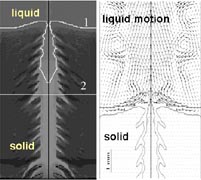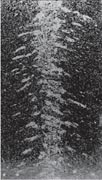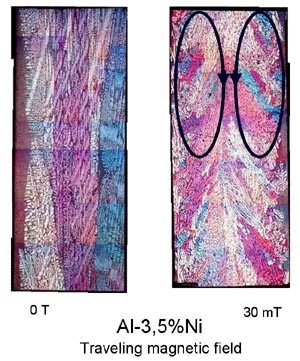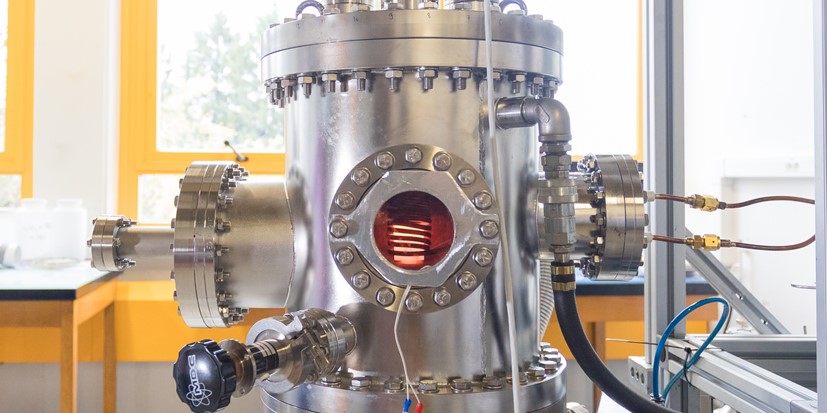These theme covers the following four items:
Structural defects
(grain boundaries, dislocations, composition segregation, residual stresses) in both photovoltaic Si and semi-conductor crystals- numerous experiments, including: supercooling of germination in the SPYCE experiment, effects of growth parameters in the VB2 experiment, AFRODITE international solidification benchmark,
- physicochemical models of defect occurrence and multiplication (grits, twins).
 |  |
| Numerical modelling of the coupled fluid flow (right) and the solute segregation pattern (left) during solidification (EPM/SIMAP) | Experiments showing the fishbone-type silicon segregation in a meridian cross-section (U. of Miskolc, Hungary) |
« The fishbone structures »: solidification and segregation under forced convection - Various types of segregations may be created by a centrifugal motion generated by a rotating magnetic field applied during the directional solidification. This has been shown on Al-7%wt.Si alloys. (ESA/MICAST and ESA/CETSOL European projects)
Sample-crucible interactions
in particular through experimental and theoretical study of the dewetting process (thermodynamic study of the effects of oxygen, analysis of liquid meniscus stability, etc.).Columnar-to-equiaxial transition
influenced by convective motions due to external fields (benchmark experiment, experiment in the MAXUS rocket probe, calculation code for multi-constituent alloys including electromagnetic forces, etc.) 
In order to control the concentration field in the neighborhood of a solidification front a traveling magnetic field is used. Controlling the velocity field this allows to control the way the alloy is solidified.
Effect of an intense continuous magnetic field
on the solidification of metal alloys: change in structure orientation, dendrite fragmentation due to thermo-electrical forces, intense drainage of pasty zones.
Other themes
- MHD, Tranfers and Energy
- Electromagnetic processes
- Numerical modelling of coupled phenomena


